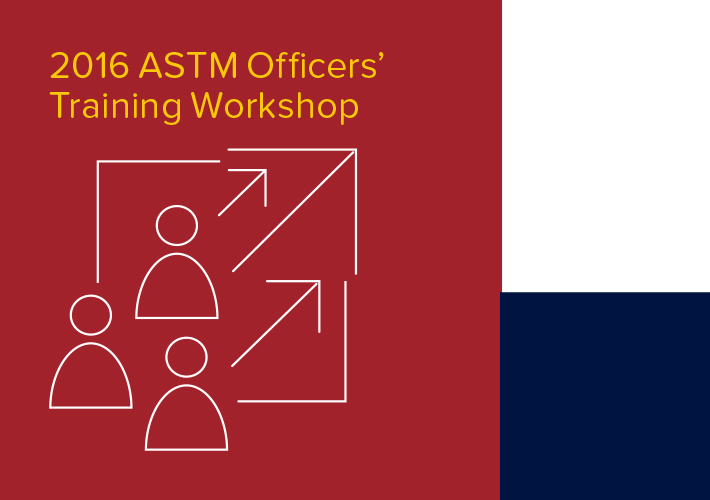
Tips from the 2016 Officers' Training Workshop
ASTM hosted the Officers' Training Workshop at headquarters on Sept. 20 and 21, with more than 60 subcommittee and main committee officers attending a day and half of training sessions.
The modules offered useful information on several subjects, such as “Balloting and Handling Negative Votes,” “Subcommittee Chair Responsibilities,” and more. Discussion at in-person programs, such as the recent Officers’ Training Workshop (and the sessions held at committee weeks), offer that — and more. A few points follow.
On using Robert’s Rules:
- When someone says, “Call the Question,” it is a motion to take a vote that needs a second and two-thirds affirmative vote. “Call the question” does not, and should not, stop discussion by itself.
- Seconding a motion does not indicate a position on the motion itself but furthers the motion so discussion can take place.
- You may need to rely on Robert’s Rules more during contentious issues, to ensure everyone has an opportunity to participate.
On balance, and balloting:
- Balance in ASTM committees is the total number of producer voters does not exceed the total number of users and general interest voters.
- If a not-persuasive motion results from addressing a negative vote, all individual points in the negative must be addressed in the rationale. The Committee on Standards will only see the original negative, the not persuasive rationale, and the vote counts in its review.
- Everyone who is a member of a particular technical committee can view the ballot closing reports after they are posted. All committee members can view ballot closing reports for their specific committee after they’re posted.
On standards activities and inquiries about standards:
- A work item is deleted automatically if the original registered target date has passed. The technical contact should edit the target date for the work item to avoid deletion and having to register another work item.
- Comments that include technical revisions can be discussed as items of new business at the next meeting. Any negatives that were found to be not related on a previous ballot or previous meeting should also be items of new businss at the next meeting.
- Standards should be reviewed in their entirety and balloted at least every five years. Following the review of the standard, it may be decided that only a particular section of the standard be balloted.
- For inquiries on standards: note that neither ASTM members or staff can provide official interpretation of standards, but inquiries can be handled informally, noting the response comes from personal experience.
And, a few final points of interest.
- The definition of quorum, which is needed to conduct official business, can be found in a committee’s bylaws. It will likely differ from committee to committee. And, even if you don’t have a quorum, you can conduct all business with the exception of taking official votes, which can be taken electronically after the meeting if needed.
- The majority of appeals that reach the Committee on Standards, the highest step in ASTM’s review process, are about not communicating.
-Jennifer Rodgers, ASTM technical committee operations - ASTM is a fertile ground for developing leadership skills in a cost-effective way.
-Jeffrey Adkins, ASTM technical committee operations
The next Officers' Training Workshop will be held in the fall of 2018. For more information on training sessions available for ASTM members, check the “Virtual Classroom for Members” and the slide presentations from 2016 Officers’ Training Workshop. If you have questions, contact your staff manager.
 SN Home
SN Home Archive
Archive Advertisers
Advertisers Masthead
Masthead RateCard
RateCard Subscribe
Subscribe Email Editor
Email Editor